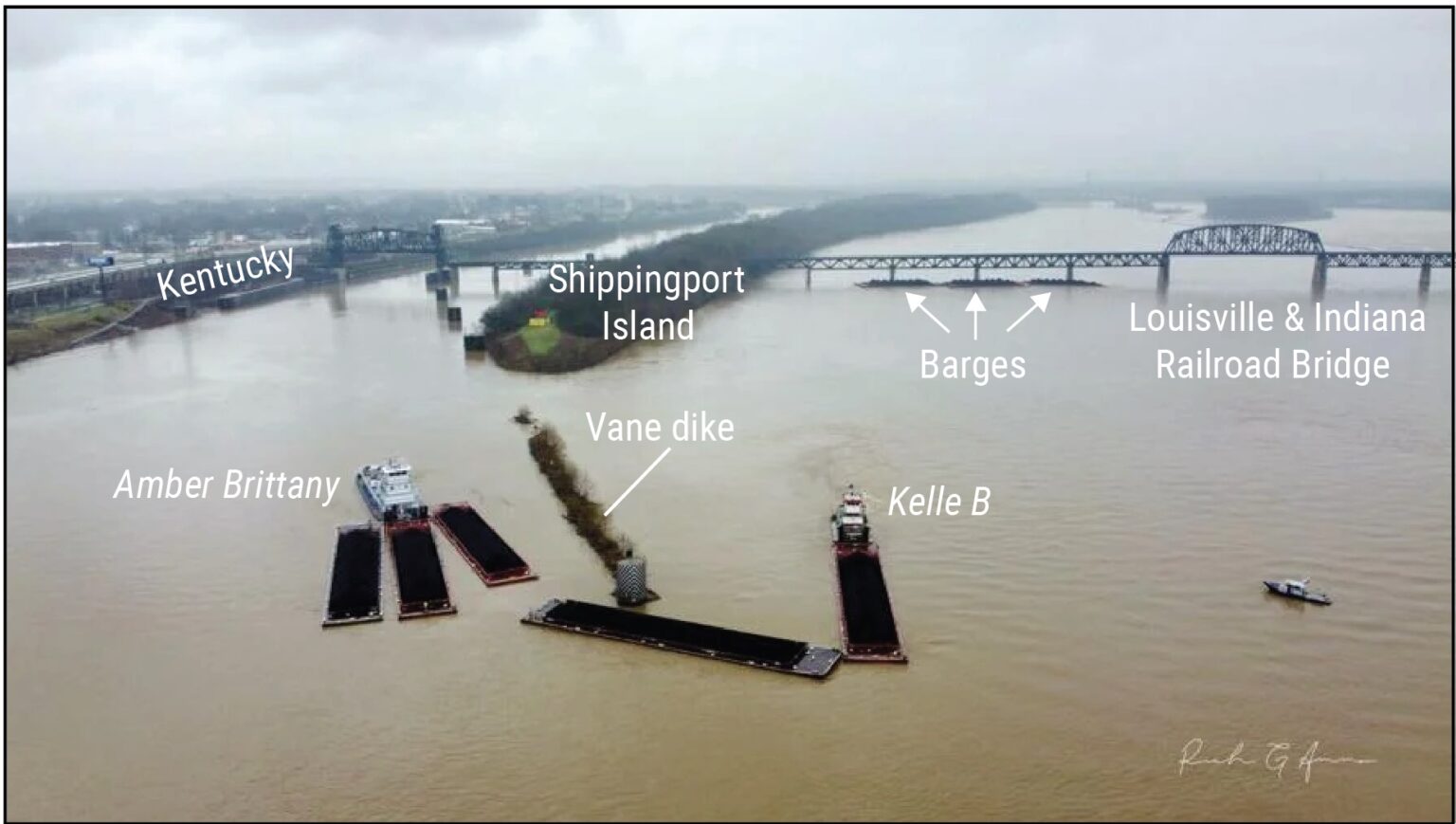
The incident occurred when the towing vessel Amber Brittany, pushing 15 barges, struck a vane dike while navigating out of the McAlpine Locks in Louisville, Kentucky. The collision caused the tow to break apart, sending 10 barges downstream and resulting in approximately $1.3 million in damage to barges, cargo, and dam gates.
According to investigators, the accident sequence began as the Amber Brittany made a port turn while passing under the L&I Railroad Bridge. The vessel encountered a strong outdraft current – a flow moving across the lock entrance toward the dam – created by nearly fully open dam gates and rising river levels. Despite the pilot’s attempts, they failed to effectively counteract the current’s force.
The investigation revealed two critical factors contributing to the accident. First, the pilot lacked experience navigating the McAlpine Locks and Dam area. While company personnel believed the pilot had previous Ohio River experience, they later admitted to investigators having no prior operations in the area.
Second, cell phone records showed the pilot was actively using their personal phone immediately before the incident, with text messages coinciding with the vessel’s departure from its intended course.
The McAlpine Locks and Dam section has proven particularly challenging for tugs and barges. Since January 2020, nine incidents involving towing vessels have occurred in this area, accumulating over $2.7 million in property damage.
The NTSB stressed the unique hazards presented by lock canal entrances near dams, particularly regarding outdraft currents. “Fast moving river water near low-flow canal waters can produce outdraft currents. Mariners should thoroughly assess the potential impact of outdraft currents when entering or exiting locking channels. Vessel horsepower and vessel handling should be carefully considered,” the report stated.
The safety board specifically addressed the dangers of mobile device use in challenging navigation situations. “Using cell phones and other wireless electronic devices has been demonstrated to be visually, manually, and cognitively distracting,” the report noted, adding that “sending or reading text messages is potentially even more distracting than talking because texting requires visual attention to the display screen of the device.”
The incident highlights the importance of experienced navigation and undistracted operation in challenging waterways, particularly in areas known for complex current patterns and navigation difficulties.

